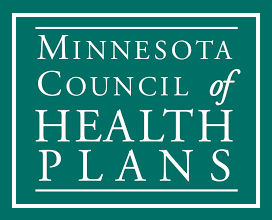Key takeaways from the 2024 Legislative Session: Growing affordability concerns for Minnesotans
A number of significant changes were made to Minnesota’s health insurance landscape as the 2024 legislative session concluded, bringing both progress and concern. A bright spot for Minnesotans was the the partial restoration of the requirement that the state’s health maintenance organizations be nonprofit. The passage of this legislation confirms the unique value that the Council’s nonprofit health plans provide to Minnesotans in the state’s Medicaid program. At the same time, the impact on health care affordability continues to trend in the wrong direction. Here’s a closer look at what unfolded and the implications for Minnesotans.
Nonprofit requirements reinstated
Back in 2017, the state repealed a historical requirement that all health maintenance organizations in Minnesota operate as a nonprofit. Health Plans that are members of the Council are all nonprofits. That means they do not make any profits or have any investors to please. Instead, Council members — after paying enrollees’ health care costs — are legally required to reinvest any leftover margin back into enhancing enrollee services or providing support for the community as part of their nonprofit mission. That 2017 change resulted in state public programs recently contracting with for profit entities for enrollee services. The change turned out to be short-lived with the unique value of nonprofit services being recognized by the state in the form of reinstatement of the for profit prohibition for public programs beginning in 2025.
Reduced oversight to manage health care costs and quality
Despite universal concerns about the growing cost of care, legislation passed this session that will increase costs. Health care services and pharmaceuticals are expensive, so health insurance is priced at a level to cover these ever-growing costs. Providers (hospitals, clinics, etc.) and/or pharmaceutical companies establish prices and Minnesota’s nonprofit health plans, as stewards of their enrollees’ premium dollar, are entrusted to negotiate access to the best care at the most affordable price. As part of that process, health plans created a preapproval process that is limited to very select (less than 2%) high-cost services and pharmaceuticals. This preapproval process serves as a double check on safety, quality, and cost. Dangerous interactions have been prevented and best practices have been reinforced through this process. Minnesotans have also benefited from lower costs. Pharmaceutical companies spend millions to advertise their exponentially more expensive brand name drugs to patients and doctors. Health plans’ preapproval process works to ensure Minnesotans can receive the lowest cost drug available to effectively treat their condition. This reduces costs across the board for Minnesotans — lower overall costs mean lower premiums and lower out-of-pocket costs. Some physicians find the process burdensome, however, so we expressed strong support for streamlining the process and using technology to expedite the review. At the same time, we insisted it shouldn’t be curtailed because it would expose Minnesotans to preventable cost increases. Unfortunately, a broad prohibition on this process was adopted over our objections and the law will severely limit one of the only tools health plans have available to help manage health care costs for Minnesotans. As noted in the state agency analysis of the bill, reducing or eliminating the use of the process drives “greater utilization of higher-cost medical services and…drugs.” Some physicians will have less paperwork, but greater utilization of higher-cost medical services and drugs will be showing up to Minnesotans in the form of increased premiums, increased out-of-pocket costs, and increased spending from the state’s budget. The effective date of this policy change is 2026, so we will be working over the next year to reform the policy in a way that lowers costs for Minnesotans, rather than increasing them.
The cumulative impact of benefit mandates
In addition to restrictions on price tools, more than half a dozen new benefit mandates passed this session, despite the fact that Minnesota has one of the highest rates of additional mandates in the country. Minnesota’s health plans want to support access to needed care. Coverage mandates, combined with high prices, however, strain affordability. The challenge becomes balancing the high costs of care so coverage is affordable in the first place. Minnesota’s health plans work to balance the added expense of providing coverage through increases in premiums and increased out-of-pocket costs. We had expressed support for an alternative policy that would have instead required the state to “defray” the cost of additional mandates so Minnesotans do not see those costs in their monthly bills. The policy received strong consideration but did not pass so we will continue our advocacy for that approach next session.
Growing affordability concerns in the individual market
Finally, the legislative session did little to address the unique challenges associated with the relatively small pool of individuals who purchase insurance on their own, including many small business owners and the self-employed. The legislative changes above, coupled with the expiration of state and federal subsidies at the end of next year, will mean serious challenges for Minnesota’s individual market in 2026. Price hikes are forecasted to be in excess of 25%, resulting in tens of thousands of Minnesotans no longer able to afford coverage. We worked hard to raise awareness of this looming challenge and were pleased to receive broad recognition that state subsidies and an extension of reinsurance should be considered early next year to head off what will otherwise be thousands of Minnesotans getting priced-out of health insurance and becoming uninsured.
Moving forward
As we move beyond the 2024 legislative session, policymakers must now turn their attention to health care affordability issues. This should include revisiting restrictions on health plans’ price tools and ensuring cost defrayals are provided for benefit mandates. The Minnesota Council of Health Plans and our nonprofit members will be working to provide targeted, innovative solutions to support the state in navigating this complex landscape.

